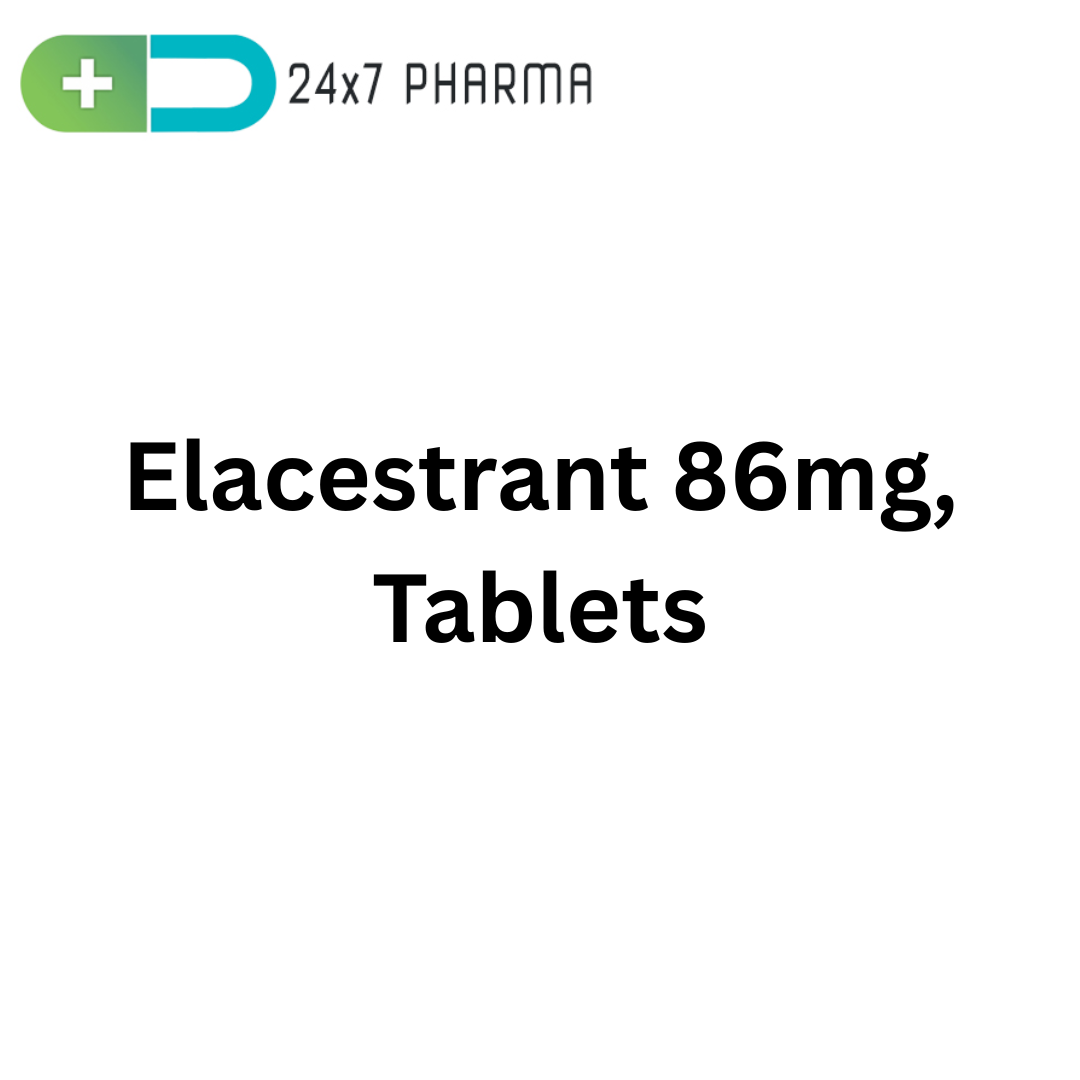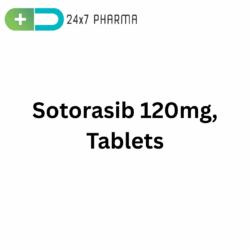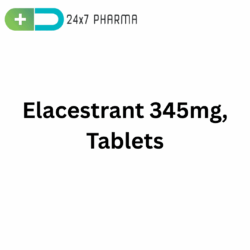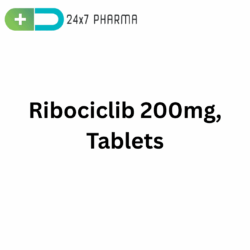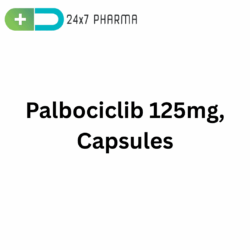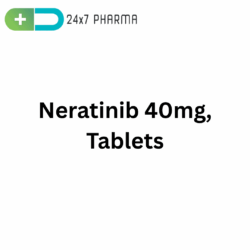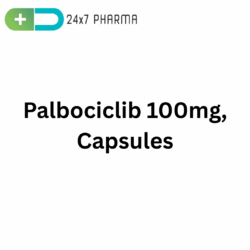LuciElace 86mg, Elacestrant Tablets
LuciElace 86mg contains Elacestrant, a selective estrogen receptor degrader (SERD) used in the treatment of hormone receptor-positive (HR+), HER2-negative advanced or metastatic breast cancer. As a next-generation oral SERD, it represents a significant advancement in endocrine therapy, particularly for patients who have developed resistance to first-line hormonal treatments.
What is LuciElace (Elacestrant) 86mg?
LuciElace 86mg is an oral medication used in the treatment of ER+/HER2- advanced or metastatic breast cancer. Elacestrant, its active ingredient, works by degrading the estrogen receptor, thereby inhibiting cancer cell proliferation. It is primarily used in patients who have already undergone endocrine therapy and have a specific ESR1 gene mutation.
How It Works / Mechanism of Action
Elacestrant is a member of the selective estrogen receptor degraders (SERDs) pharmacological class. It functions by:
- attaching itself to cancer cells’ estrogen receptors (ER).
- Blocking estrogen from attaching and activating the receptor.
- Degrading the estrogen receptor protein, leading to reduced signaling that promotes cancer cell growth.
- Elacestrant is especially beneficial in cases involving ESR1 mutations, a common resistance mechanism against earlier hormonal therapies like aromatase inhibitors or tamoxifen.
How to Use / Indications
Indications:
Advanced or Metastatic ER+/HER2- Breast Cancer:
LuciElace is indicated in patients who have disease progression following at least one line of endocrine therapy. It is commonly used after resistance develops to therapies such as fulvestrant or aromatase inhibitors.
Use:
- Administered orally once daily.
- It can be taken either alone or in conjunction with other anticancer medications.
How to Take / Dosage
Standard Dose:
- The recommended dose is 86mg once daily with food.
Administration Instructions:
- Take the tablet at the same time each day.
- Swallow whole; do not chew, crush, or split the tablet.
- Consume with food to ensure optimal absorption.
Other Dosage
Currently, the standard dose of Elacestrant for approved indications is 86 mg daily. Dosage adjustments may be considered in case of side effects or drug interactions, but alternative dosing regimens are not commonly used. Research is ongoing for its use in combination therapies or other cancer types.
Side Effects
Like all medications, LuciElace may cause side effects. Common and serious ones include:
Common Side Effects:
- Nausea
- Fatigue
- Vomiting
- Constipation
- Joint pain (arthralgia)
- Increased liver enzymes (AST, ALT)
Serious Side Effects:
- QT interval prolongation (heart rhythm changes)
- Hepatotoxicity (liver toxicity)
- Severe fatigue or weakness
- Significant gastrointestinal distress
- Monitoring is recommended for liver function, ECG in patients at risk for QT prolongation, and symptom assessment during treatment.
Storage
- Temperature: Store at 20°C to 25°C (68°F to 77°F).
- Container: Keep in the original packaging to protect from moisture and light.
- Keep out of reach of children and pets.
- Do not use expired medication.
Benefits
LuciElace (Elacestrant) offers several benefits over traditional hormonal therapies:
- Oral Administration – Unlike fulvestrant, which requires intramuscular injections, Elacestrant is taken orally.
- Effective in ESR1 mutations – Shows strong efficacy in patients with ESR1-mutant tumors resistant to other endocrine therapies.
- Prolongs progression-free survival (PFS) – Demonstrated in clinical trials such as EMERALD, where it outperformed standard endocrine therapy.
- Better tolerability – Well-tolerated in many patients, with manageable side effects.
Prescription
LuciElace is a prescription-only medication. It should be prescribed and monitore by an oncologist or healthcare provider experience in cancer treatment. Diagnostic confirmation of HR+ and HER2- status is require, and ESR1 mutation testing may be advise for personalize treatment.
Interaction
Drug-Drug Interactions:
-
- CYP3A4 Inhibitors (e.g., ketoconazole): May increase Elacestrant levels; dose adjustment may be necessary.
- CYP3A4 Inducers (e.g., rifampin): May reduce efficacy by decreasing drug levels.
- QT-Prolonging Drugs (e.g., certain antibiotics or antipsychotics): Caution advised due to risk of additive QT prolongation.
- Food Interaction: Taking Elacestrant with food increases bioavailability, enhancing its effectiveness.
FAQs
How long do I need to take LuciElace?
It is usually take until disease progression or unacceptable toxicity.
Can men use LuciElace?
Yes, it is approve for use in adult men with HR+/HER2- breast cancer.
Can I take LuciElace with other cancer drugs?
Yes, but only under medical supervision due to possible drug interactions.
Conclusion
LuciElace 86mg (Elacestrant) represents a promising advance in the treatment of hormone receptor-positive, HER2-negative metastatic breast cancer, especially in patients with resistance to prior endocrine therapies. As an oral SERD with favorable efficacy against ESR1 mutations, it offers convenience and clinical benefit. While side effects must be monitore, its ease of use and effectiveness make it a valuable option in the oncologist’s toolkit. Always consult your healthcare provider for personalized treatment decisions and report any unusual symptoms during therapy.

